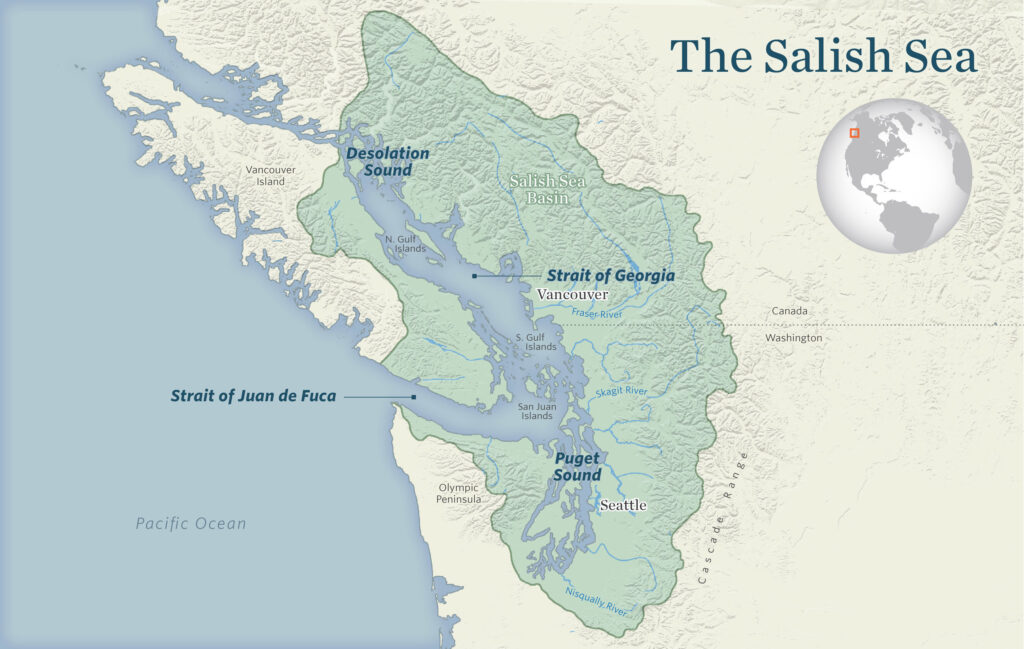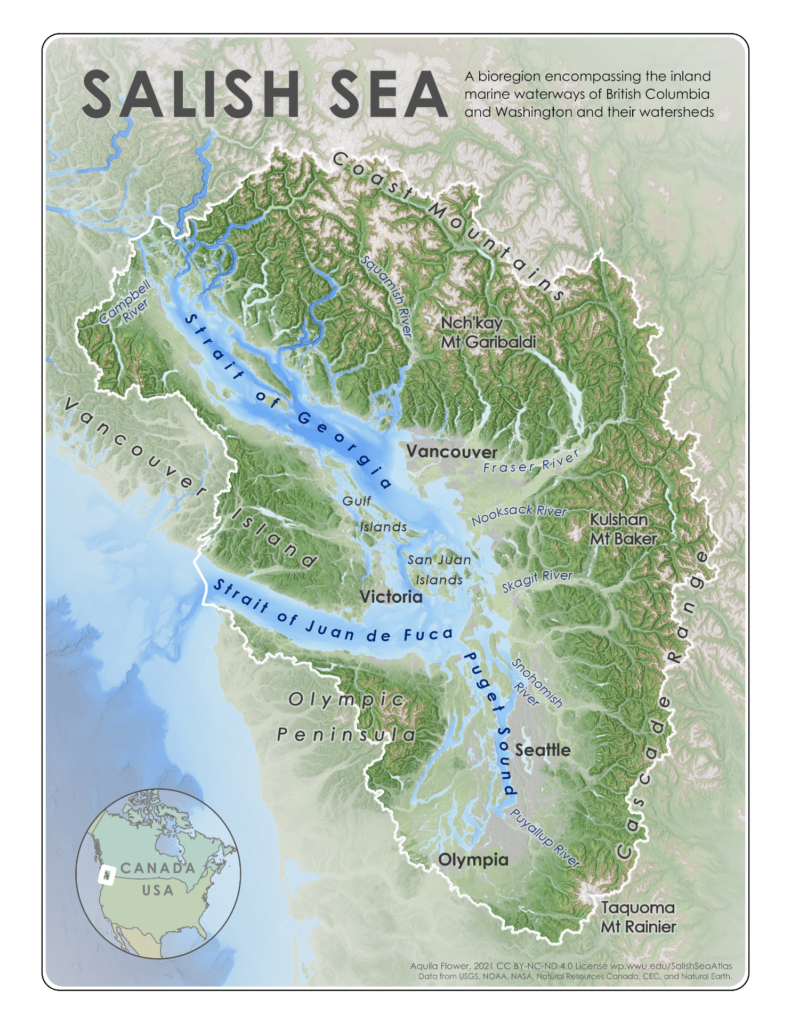The Salish Sea is a marginal sea of the Pacific Ocean located in the Canadian province of British Columbia and the U.S. state of Washington. It includes the Strait of Georgia, Strait of Juan de Fuca, Puget Sound, and an intricate network of connecting channels and adjoining waterways.
Salish Sea – Wikipedia

Just as currents and tides know no man-made borders, neither do ecosystems. What the Coast Salish and neighboring indigenous tribes have stewarded for generations, we know today as the Salish Sea. Composed of waters tucked alongside the Pacific Ocean, adjacent to British Columbia in Canada and Washington state in the United States, this unified sea encompasses the Strait of Juan de Fuca, the Puget Sound and the Strait of Georgia. A defining feature of the Salish Sea is the interaction between salt water from the Pacific Ocean and fresh water from rivers that flow from the surrounding watersheds. This confluence produces a rich and diverse biological web that is robust, yet under stress.
“Where is the Salish Sea?”, Washington Nature, The Nature Conservancy

These reference maps show the lands, waters, and urban areas of the transboundary Salish Sea Bioregion. The Salish Sea is an international estuarine ecosystem composed of an intricate network of inland marine waterways in Washington and British Columbia. The Salish Sea Bioregion includes both the marine waters and their upland watersheds.
Western Washington University- Salish Sea Atlas
Differences in Bodies of Water
Channel versus strait versus passage versus sound? A channel and strait both connect bodies of water, but a channel is often wider. A sound is like a strait, but larger. A passage typically connects bodies of water between islands. However, the terms are often used interchangeably.
All those confusing geography terms, explained in a gorgeous antique map, By Phil Edwards, Vox